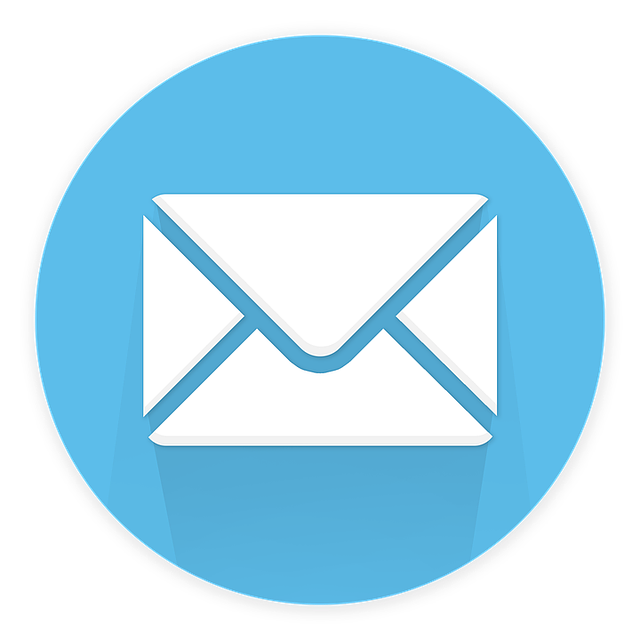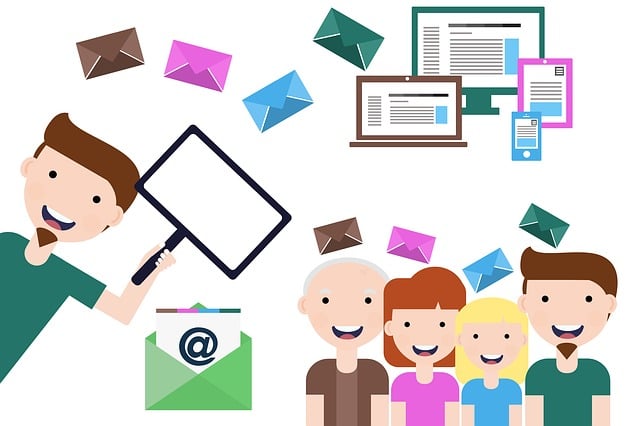Are you a real estate agent looking to boost your marketing efforts without breaking the bank? In today’s digital age, email marketing is a cost-effective way to reach a wide audience and generate leads.
But how can you make the most of this strategy on a limited budget? By employing smart email marketing strategies, you can effectively engage with potential buyers and sellers without draining your resources.
In this article, we will explore six budget-friendly email marketing strategies specifically tailored for real estate agents. From building a targeted email list to optimizing your campaigns for mobile devices, we’ll show you how to maximize your impact while keeping costs down.
So, let’s dive in and discover how you can leverage the power of email marketing to grow your real estate business without breaking the bank.
Key Takeaways
- Building a targeted email list by offering valuable content in exchange for email addresses is crucial for real estate agents on a budget.
- Email list segmentation allows for more personalized and relevant emails, enhancing deliverability and open rates.
- Engaging email strategies such as personalized subject lines, visual storytelling, and clean email designs can save time and money while effectively conveying messages.
- Automation and behavioral triggers in email campaigns save time, provide consistent engagement, and lead to conversions.
Build a Targeted Email List
You can start building your targeted email list by utilizing online platforms and tools to capture potential leads and organize them in a visually appealing way.
Email list growth is crucial for real estate agents on a budget, as it allows you to reach a wider audience without spending a fortune on advertising.
One effective strategy is to offer valuable content such as e-books or guides in exchange for visitors’ email addresses.
Another tactic is to use lead capture forms on your website or landing pages.
Once you have a growing list, email list segmentation becomes important. This involves grouping your subscribers based on criteria like location, interests, or buying stage, allowing you to send more personalized and relevant emails.
By building a targeted email list and segmenting it effectively, you lay the foundation for creating engaging email content that will resonate with your audience.
Create Engaging Email Content
Imagine captivating your audience with irresistible email content that leaves them eagerly waiting for your next message. One way to achieve this is by using personalized subject lines that grab attention and make recipients feel like the email was specifically crafted for them. Consider using their name or referencing a previous interaction to create a sense of familiarity.
Another effective strategy is visual storytelling. Incorporate eye-catching images or videos that tell a compelling story about a property or a successful client experience. This helps to engage your audience and make your emails more memorable. The best part? These tactics can be implemented on a budget. So start creating personalized subject lines and incorporating visual storytelling to take your email marketing to the next level. And don’t worry, we’ll show you how to automate your email campaigns in the next section.
Automate Your Email Campaigns
To automate your email campaigns and save time, set up drip campaigns where your emails are automatically sent at predetermined intervals. This allows you to consistently engage with your audience without having to manually send each email.
Use behavioral triggers to send targeted emails based on your recipients’ actions, such as opening an email or clicking on a specific link.
Lastly, segment your email list to ensure that your messages are relevant and personalized to each group, increasing the chances of conversion and engagement.
Set Up Drip Campaigns
When setting up drip campaigns, make sure to create a series of automated emails that engage potential clients and keep them informed about real estate opportunities, ultimately leading to conversions.
Personalize messages by addressing recipients by name and tailoring the content to their specific interests or needs. This will help you establish a connection and build trust with your audience.
Additionally, regularly measure campaign success by tracking open rates, click-through rates, and conversions. Use this data to refine your email content and improve future campaigns.
Now, let’s move on to the next section about using behavioral triggers to further enhance your email marketing strategies.
Use Behavioral Triggers
By utilizing behavioral triggers, real estate agents can tailor their automated email campaigns to the specific actions and interests of potential clients, enhancing the overall effectiveness of their marketing efforts.
Personalization techniques play a crucial role in engaging recipients and increasing conversion rates. With behavioral triggers, agents can track and analyze how subscribers interact with their emails, such as opening, clicking, or making inquiries. By understanding these behaviors, agents can segment their email list based on specific criteria, such as location, property preferences, or stage in the buying process. This allows for the delivery of targeted and relevant content to each segment, increasing the likelihood of conversion.
Segmenting your email list based on these behavioral triggers helps ensure that your real estate marketing emails are timely, useful, and resonate with your audience.
Segment Your Email List
Imagine effortlessly organizing your potential clients into specific groups based on their interests and behaviors, allowing you to send them personalized and relevant content that resonates with their specific needs and desires.
Segmenting your email list is a powerful strategy to maximize the impact of your email marketing efforts. By dividing your subscribers into distinct groups, you can tailor your messages to their preferences, increasing engagement and conversion rates.
Email personalization is key in this process, as it allows you to address your clients by name and deliver content that speaks directly to their interests. Additionally, segmenting your list can help you manage email frequency, ensuring that you don’t overwhelm your subscribers with too many messages.
Now, let’s dive into the next step: optimizing your emails for mobile devices.
Optimize for Mobile Devices
To optimize your email campaigns for mobile devices, start by using responsive email templates. These templates automatically adjust the layout and design of your emails to fit different screen sizes, ensuring that your message is easily readable on any device.
Additionally, keep your email design clean and simple, as cluttered or overly complex designs can be difficult to navigate on mobile screens.
Finally, make sure to test your emails on different devices to ensure they display properly and function as intended.
Use Responsive Email Templates
Make sure you’re using responsive email templates to create visually appealing and engaging emails for your real estate clients.
Responsive email design is crucial because it ensures that your emails look great on any device, including smartphones and tablets. With more and more people accessing their emails on mobile devices, it’s essential to optimize your emails for mobile viewing.
Responsive email templates automatically adjust the layout and formatting of your emails to fit different screen sizes, making it easier for your clients to read and interact with your content.
Additionally, email personalization is another important aspect to consider. By customizing your emails with your clients’ names and relevant information, you can create a more personal connection and increase engagement.
Moving on to the next section, keeping the email design clean and simple is equally important in attracting your audience’s attention.
Keep the Email Design Clean and Simple
Enhance your email’s allure by creating a sleek and minimalist design that captivates your audience’s attention. A minimalistic email design not only looks clean and professional, but it also helps to convey your message effectively.
By using a simple layout, limited color palette, and minimal graphics, you can create an email that is visually appealing and easy to read. Remember to leave plenty of white space in your design, as it helps to improve readability and allows the content to breathe.
Avoid cluttering your email with unnecessary elements or excessive text. Instead, focus on delivering your key points concisely and clearly. A clean and simple design will not only save you time and money but will also make your emails more engaging and impactful.
In the next section, we’ll discuss how you can test your emails on different devices to ensure they look great on all screens.
Test Your Emails on Different Devices
When it comes to email marketing, it’s crucial for success to keep your design clean and simple. Now that you’ve mastered the art of designing effective emails, it’s time to take it a step further. Testing your emails on different devices is essential to ensure they look great and function properly for all recipients.
By doing so, you can identify any formatting issues or broken links that may affect the overall user experience. This not only improves the deliverability of your emails but also enhances open rates. To help you get started, here are five key reasons why testing your emails on different devices is a must:
- Ensures a consistent experience for all recipients.
- Identifies any formatting issues or broken links.
- Enhances deliverability and open rates.
- Boosts engagement and click-through rates.
- Builds trust and credibility with your audience.
Now that you’ve mastered the art of testing your emails, it’s time to dive into the next step: tracking and analyzing your email performance.
Track and Analyze Your Email Performance
Boost your email marketing efforts by analyzing and tracking the performance of your emails. Utilize email performance tracking tools to gain valuable insights into how your emails are performing. These tools allow you to track metrics such as open rates, click-through rates, and conversion rates, giving you a clear picture of what’s working and what isn’t.
Interpreting email analytics is essential to optimize your email marketing strategy on a budget. Identify trends and patterns in your data to make informed decisions about your content, subject lines, and send times. By understanding what resonates with your audience, you can refine your approach and maximize your marketing efforts.
In the next section, we’ll discuss how to nurture and maintain relationships with your email subscribers.
Nurture and Maintain Relationships
To foster fruitful connections with your email subscribers, it’s crucial to consistently nurture and nourish those relationships. Maintaining client loyalty and fostering long-term connections can lead to repeat business and referrals.
Here are four budget-friendly strategies to help you maintain and nurture your relationships:
-
Personalize your emails: Use the subscriber’s name and tailor your content to their specific needs and interests.
-
Provide valuable content: Share informative articles, market updates, and tips that can help your subscribers in their real estate journey.
-
Engage with your subscribers: Encourage feedback, ask for opinions, and respond promptly to their inquiries or concerns.
-
Offer exclusive perks: Provide special discounts, early access to listings, or free home staging consultations to show your appreciation and keep your subscribers engaged.
By implementing these strategies, you can strengthen your relationships, build trust, and ultimately grow your real estate business on a budget.
Frequently Asked Questions
How can I effectively segment my email list to target specific groups of potential clients in the real estate market?
To effectively segment your email list for targeted email marketing, start by categorizing your potential clients based on their specific needs and preferences. This could include factors like location, budget, property type, or stage in the buying or selling process.
Use these segments to create personalized and relevant content that speaks directly to each group. By tailoring your emails to their specific interests, you can maximize engagement and conversion rates without breaking the bank.
Are there any specific email content ideas or templates that have been proven to be successful for real estate agents?
Looking for email content ideas and templates that actually work for real estate agents? Well, surprise! There’s no magic formula.
But here’s what you can do: craft attention-grabbing subject lines to entice recipients to open your emails. Then, use effective call to action phrases to prompt them to take action, like scheduling a showing or requesting more information.
Remember, simplicity is key and keep your budget in mind when creating your email content.
What are some reliable and affordable email automation tools that real estate agents can use to streamline their email campaigns?
Looking for affordable email marketing software options for real estate agents?
There are several reliable tools that can streamline your email campaigns without breaking the bank. Some popular choices include Mailchimp, Constant Contact, and Sendinblue, which offer affordable pricing plans and user-friendly interfaces.
To improve email open rates in real estate marketing, focus on creating compelling subject lines, personalizing your emails, and providing valuable content that resonates with your audience. These strategies can help you make the most of your budget while maximizing your email marketing efforts.
How can I ensure that my emails are optimized for mobile devices and are visually appealing on different screen sizes?
To ensure your emails are optimized for mobile devices and visually appealing on different screen sizes, follow email design best practices.
Did you know that 54% of emails are opened on mobile devices? Start by using a responsive email template that automatically adjusts to different screen sizes.
Keep your email design clean and simple, using a single column layout and large, easy-to-read fonts. Use images sparingly and optimize them for fast loading.
Test your emails on different devices to ensure they look great everywhere.
What key metrics should I be tracking and analyzing to measure the success of my email marketing campaigns as a real estate agent?
To measure the success of your email marketing campaigns as a real estate agent, there are two key metrics you should track and analyze: conversion rates and open rates.
Conversion rates indicate how many recipients took the desired action, such as clicking a link or filling out a form.
Open rates measure the percentage of recipients who opened your email.
By monitoring these metrics, you can determine the effectiveness of your campaigns and make necessary adjustments to maximize your results.
Conclusion
So there you have it, budget-conscious real estate agents! By implementing these email marketing strategies, you can effectively reach your target audience without breaking the bank.
Building a targeted email list will ensure that your messages are reaching the right people, while creating engaging content will keep them interested and coming back for more.
Automating your campaigns will save you time and effort, and optimizing for mobile devices will ensure that your emails are accessible to everyone.
By tracking and analyzing your email performance, you can make data-driven decisions to improve your results. And finally, nurturing and maintaining relationships will help you build trust and loyalty with your audience.
So get started today and watch your real estate business thrive!







